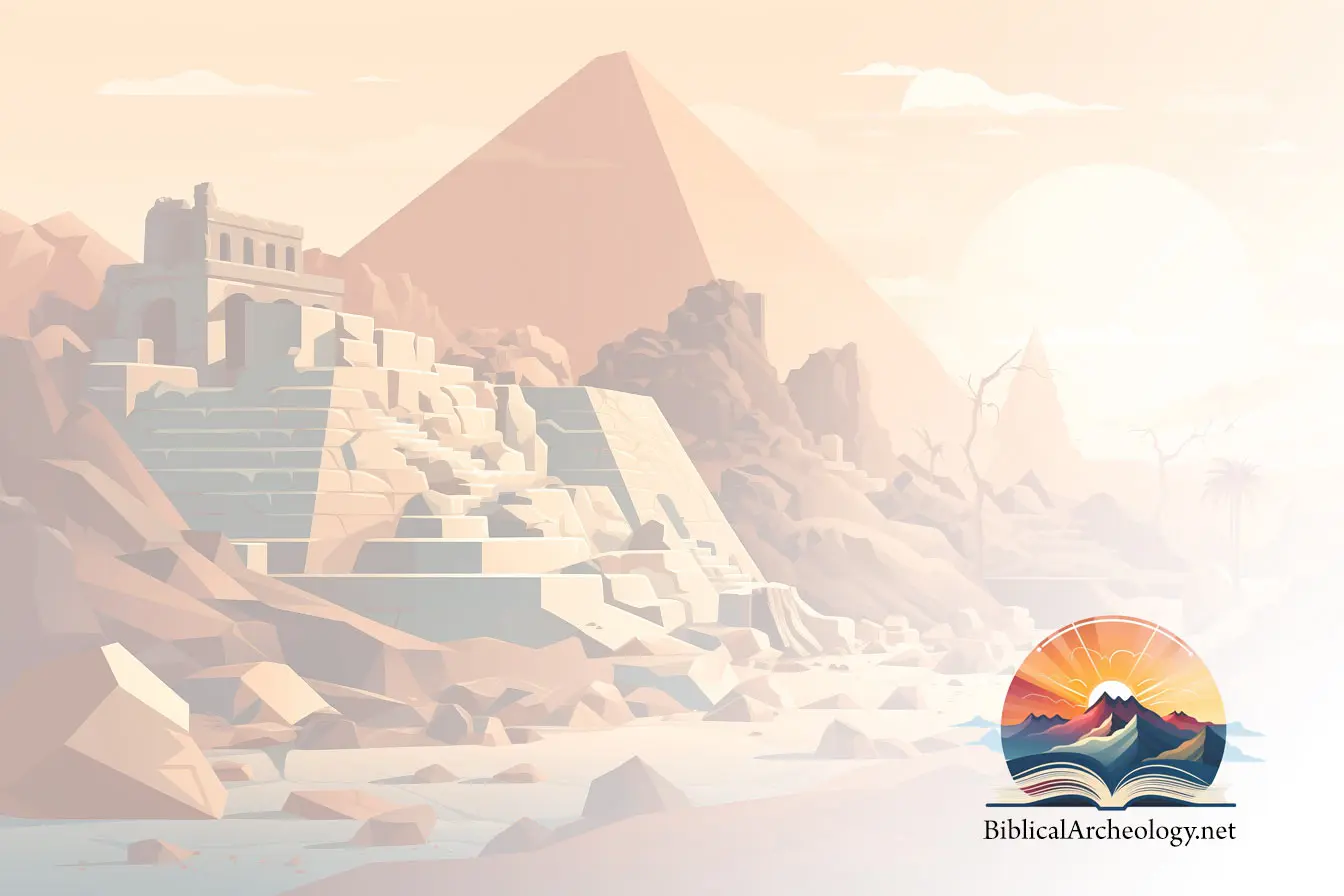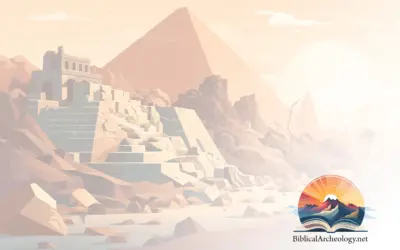By Ferrell Jenkins
Because the Bible was written in Hebrew and Greek it is necessary that someone translate it into English and other languages so that it can be read by those with little or no knowledge of the original languages. Most of us realize this. Perhaps we do not see as readily that the customs and culture of the Bible must also be “translated” for the modern reader. History and archaeology provide the Bible student with much help in this effort.
Archaeology is a systematic study of ancient people as their life can be learned by what they left behind. In addition to the remains of palaces, temples, monuments, and great buildings, the archaeologists find immense libraries, weapons, pottery, tablets, murals, coins, jewelry, utensils, and even clothing. The “Biblical world” includes the areas of Mesopotamia (modern Iraq), Persia (modern Iran), Egypt, Palestine (modern Lebanon, Israel, the West Bank), Jordan, Syria, Asia Minor (modern Turkey), Greece, Italy and a few other areas.
What Archaeology Can and Can Not Do
The Bible claims to be the inspired word of God (2 Tim. 3:16-17). We do not believe that the purpose of archaeology is to “prove” the Bible is true. It is better to speak of archaeology illustrating, illuminating, or supplementing the Biblical record. Sometimes even the word confirm may be appropriate. Generally speaking, the finds of archaeology have been friendly to the Bible, but some problem areas do exist and several widely held views have been reversed as a result of subsequent studies.
Some Values of Archaeology
(1) General Cultural Background. Archaeology, along with other historical records, provides the general cultural background of the history of the Bible. The Bible furnishes us with a character and archaeology furnishes the cultural background in which he lived. It says that these persons were not figments of overzealous imaginations, but real people. The sketchy lives of characters described in the Bible are seen to fit into the general historical period in which the Bible places them.
Excavations of the City of David (Zion) in Jerusalem have revealed much about life at the time of the fall of the city to the Babylonians. The excavations at Lachish have provided a better understanding into both the Assyrian and Babylonian conquests of Israel and Judah. This information provides much help in a study of the Old Testament historical books and the prophets.
(2) Resurrection of Forgotten People. Forgotten people have been brought to life by the archaeological spade. The Hittites, even though mentioned more than 40 times in the Old Testament (Josh. 1:4, et al.), were unknown outside the Bible at the beginning of the twentieth century. Some critics had denied the existence of such a people. By 1906 the Hittite capital at Boghazkoy (near Ankara, the capital of modern Turkey) was being excavated by Hugo Winckler. I have visited the site as well as the Anatolian Civilizations Museum in Ankara where the Hittite treasures are housed. Courses in Hittite civilization are now offered in major universities.
The names of numerous individuals who are mentioned in the Scriptures have been found on inscriptions, seals, and bullae from the period in which they lived. Ahab, Jehu, Mesha, Jehoiachin, Gemariah, Baruch, and Sargon are just a few of those named in the Bible who are also now known from historical records outside the Bible.
(3) Chronology. The Israelites never developed a consecutive chronology. Who has not wished for more information as he tried to make sense of the books of Kings and Chronicles? Fortunately, the nations about Israel (Egypt, Assyria, and Babylon) did use consecutive dating. By the Israelite contact with these peoples we are able to develop dates for Old Testament events and persons. The Babylonian Chronicle, read by D. J. Wiseman of the British Museum in 1955, provides the date of the capture of Jerusalem by Nebuchadnezzar and the taking away of Jehoiachin (2 Kings 24:10 17). In our calendar the date would be March 16, 597 B.C. Other tablets, now in the Pergamon Museum in Berlin, list rations provided daily to king Jehoiachin and his servants while they were in Babylon (2 Kings 25:27 30).
(4) Identify Biblical Sites. Several Biblical sites have been identified as a result of inscriptions that have been discovered. Gezer was identified when an inscription with the Hebrew words “the boundary of Gezer” was found at the site (1 Kings 9:15 17). Other examples of this include Gibeon, Ekron, Derbe, Lystra, and Thyatira.
(5) Help in Translating the Bible. Many ancient documents and inscriptions have been discovered which provide a better insight into the meaning of words used in the Hebrew and Greek originals which make up our Bible. Actual Biblical manuscripts have also been found.
(6) Demonstrates Accuracy of Bible. Archaeology has done a great deal to correct the impression that the Bible and Biblical history was of doubtful trustworthiness. Many of the illustrations used above show that the Bible is to be trusted in what it says.
The Case of Sargon
The case of Sargon provides a good illustration of the value of archaeology in Bible study. He is one of the forgotten persons who has been brought to life by the archaeological pick, and he provides a great illustration of the historical trustworthiness of the Bible. Because the story has unfolded over a period of a century and a half it shows the need for patience on the part of students. In a day of instant communication and the quick fix, this is not easy for most of us.
Sargon II was king of Assyria from 721 to 705 B.C., but records which survived into the 19th century made no mention of him. In the only reference to Sargon in the Bible the prophet Isaiah says, “In the year that the commander came to Ashdod, when Sargon the king of Assyria sent him and he fought against Ashdod and captured it” (Isa. 20:1). In the earlier English versions, including the King James and the American Standard, the Hebrew term for commander was transliterated as a personal name, Tartan. Since the time of those versions scholars have learned more about the Assyrian language. The New King James continues to use the term Tartan but adds a note, “Or the Commander in Chief.” The NASB simply uses the term commander. The RSV and the NRSV use the phrase commander in chief. The NIV uses the phrase supreme commander. Grogan, in The Expositor’s Bible Commentary, says the term tharetan (tartan) “really means ‘second’ and is indirect testimony to the great value the Assyrians attached to military prowess. Their supreme commander was second in status only to the king himself.”
James Orr commented in 1906, “Ancient writers knew nothing of him [Sargon]. He was a mystery: some did not hesitate to deny that he ever existed” (The Problem of the Old Testament, 399). Sargon’s palace was found by Paul Emile Botta at Khorsabad in 1843. In various inscriptions and annalistic reports Sargon II claims to have taken Samaria (Ancient Near Eastern Texts, 284 87). A nonagonal prism, chronicling the expedition of Sargon II against Babylon, Medians, Syria, and Palestine mentions the conquest of Samaria, “the land of the house of Omri,” in 721 B.C. (British Museum artifact 22505 from Khorsabad, 8th century B.C.).
In one annal Sargon says: “I besieged and conquered Samaria, led away as booty 27,290 inhabitants of it. I formed from among them a contingent of 50 chariots and made remaining (inhabitants) assume their (social) positions. I installed over them an officer of mine and imposed upon them the tribute of the former king” (ANET, 284 85). In another annal he claims to have rebuilt the town “better than (it was) before and settled therein people from countries which I myself had conquered” (ANET, 284). Samaria actually fell to Shalmaneser in 722 B.C. (Assyrian records and the Bible agree). Sargon began his reign in 721 B.C. and claims some of the credit.
My only opportunity to visit Iraq (area of ancient Mesopotamia) was in 1970. I recall a room in the newly opened Iraq Museum in Baghdad devoted to items from the palace of Sargon at Khorsabad. The British Museum has numerous artifacts depicting Sargon or containing inscriptions about his work (BM118822; BM118828; BM135206; BM118808, et al.). Recently the Louvre has opened a remodeled exhibit of reliefs from the palace of Sargon II.
Fragments of a basalt victory stele of Sargon II were found at Ashdod in 1963. This artifact is now on display in the Israel Museum in Jerusalem. Ashdod is mentioned in Isaiah 20:1 as the town captured by Sargon!
In 1989 archaeologists unearthed fabulous treasures at Nimrud (Biblical Calah) including more than 125 pounds of gold jewelry. According to a report in Time, “Much of that gold [found in April] turned out to be priceless jewelry draped around the skeleton of a young princess named Yabahya, tentatively identified as the daughter of one of Assyria’s most renowned and feared kings, Sargon II.” In July, a few yards from the original find, the excavators found more than 440 pieces of gold jewelry believed to “represent the private collection of an Assyrian queen, perhaps the wife of Ashurnasirpal himself.” See “The Golden Treasures of Nimrud,” Time, 30 Oct., 1989: 80 81.
Isaiah had it right all along. One needs to hesitate a long time (maybe a couple of centuries!) before questioning the accuracy of the Bible.
Conclusion
If the Bible student uses maps, Bible dictionaries, commentaries, and other up to date helps which reflect the current knowledge in archaeology he will be greatly repaid for his effort. This information can serve him well when he talks with those who doubt the historical character of the Bible.


